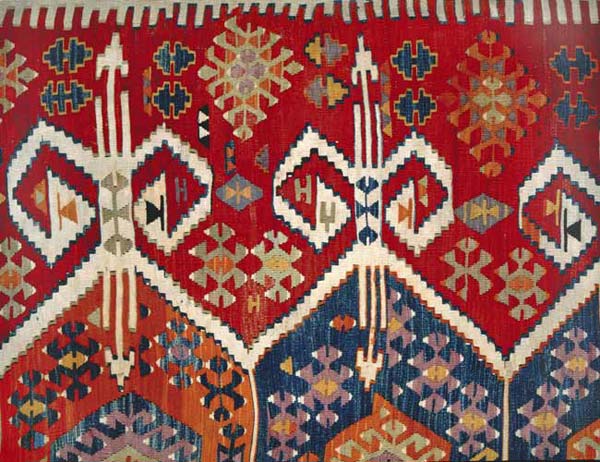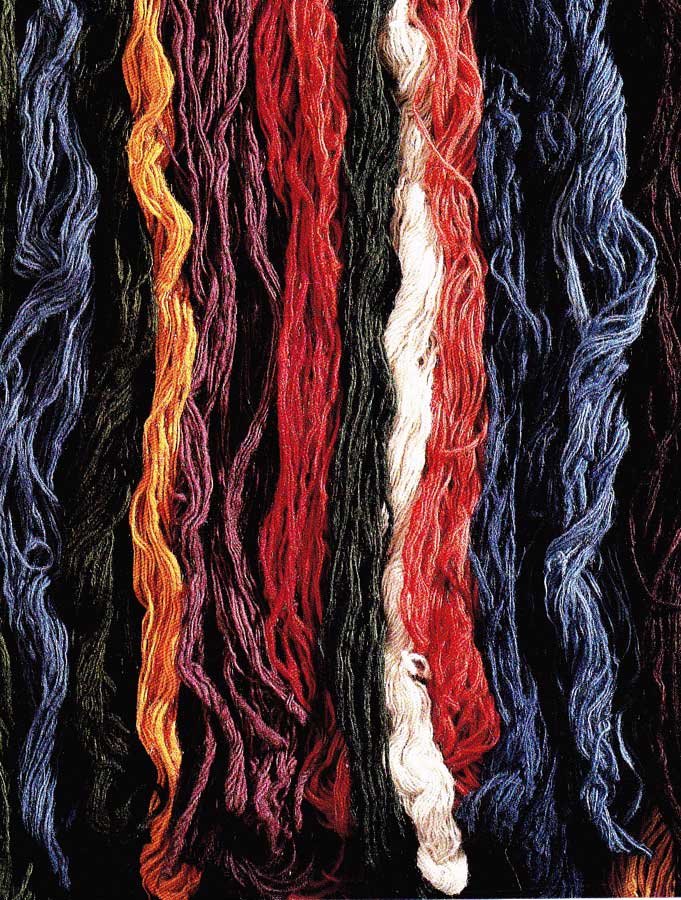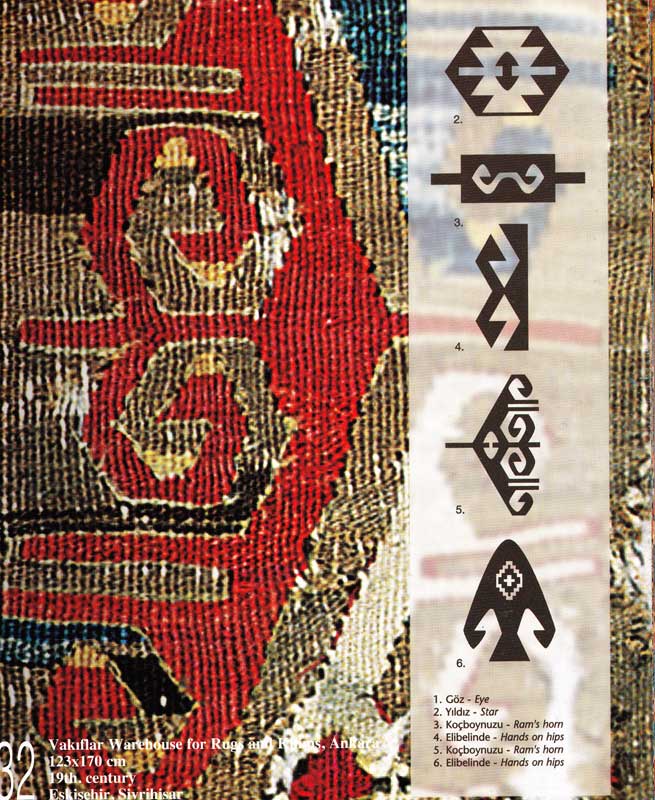The kilim

About Kilims
“Kilim" is a Turkish word referring to the flat weaving technique or tapestry method. This carpet making method is different from the knotted stitch method (velvet look). Kilims are lighter-weight and more flexible.
Different weaving methods

Kilim
or tapestry weaving
It’s one of the simplest, the most widespread and the most ancient weaving modes. This technique is based on warp yarns or threads (vertical yarns going lengthwise from one end of the kilim to the other) and colored weft yarns or threads (horizontal yarns that pass over and under the warp to form the motifs).

Cicim and Zili
or floating weft brocade
This technique consists of weaving decorative yarns into a plain background as the kilim is being created.

Soumak
or weft wrapping brocade
Consists of wrapping the decorative weft yarns directly over the warp yarns.

About the colors
Kilims from Anatolia (a Turkish region) are well known for their beauty and the diversity of their colors. The different colors come from plants, minerals or even insects (the cochenille). These colors were produced with traditional methods: by decoction, maceration and other processes. The wool was dyed in cauldrons, which explains the richness of the color nuances that manufacturers try to imitate. The plants used to make the colors were gathered by the nomads often during their journeys. Certain colors have become extremely rare as some of these plants have disappeared. Some chemical colors appeared about 30 to 40 years ago, but they have not been used much. They are easy to spot by their shine and their fade resistance as they do not change with time. These colors are often bright blues, reds or bright pinks that spoil the harmony of an aging kilim. It’s important to distinguish between contemporary and antique kilims. Contemporary kilims with their industrial but plant-based colors are of excellent quality as they are fade resistent when washed and exposed to light. However, their beauty can not compare with the kilims made by the ousemi-nomads..

About the motifs
Each motif comes from a symbol with numerous forms. Abstract and geometric figures for the Sunnite Muslims or stylised animals for the Chiite Muslims: these symbols of nomad origin are the expression of beliefs and superstitions. The motifs change according to the tribes and the villages. This allows the geographic origin or the ethnic group at the origin of each kilim to be determined. Each composition is the work of a particular weaver whose style and inspiration comes from his family and from village traditions
